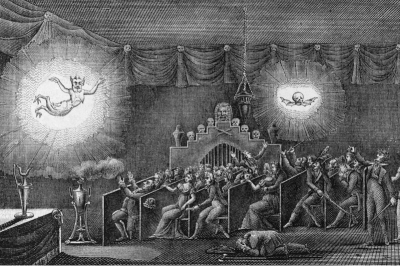
Fantasmagoria was a popular form of horror theatre that was brought from Berlin, Germany to France in the 18th Century and thrilled audiences with macabre illusions created through audio effects and magic lanterns.
Fantasmagoria was a popular form of horror theatre that was brought from Berlin, Germany to France in the 18th Century and thrilled audiences with macabre illusions created through audio effects and magic lanterns. This kind of experimental visual storytelling can be clearly seen as a precursor to modern horror movies. Étienne-Gaspard Robert, a physicist and stage magician, is one of the most influential figures in this genre of the theatre.
Magic lanterns
The discoveries in the fields of science and technology at the end of the 17th Century allowed for the invention of the magic lantern for the projection of images.
Professor Tom gunnings from the University of Chicago, explains this technology was the precursor to the slide projector of more recent times. It was an invention that consisted of a lamp which allowed images painted on glass to be projected on the objects in dim-lit rooms.
Fantasmagoria was a spectacular theatrical experience which was often held inside abandoned crypts and the stone chambers that were built underneath the floors of old churches. These crypts usually contained religious items like altars, coffins and magical symbols and in combination with the sound effects and optical illusions created by the magic lanterns, would leave the spectators shivering and shuddering, covering their eyes out of fear.
The critical thought
Art is often employed as a tool to push through the boundaries of culture, politics and economics. The fantasmagoria shows under the guise of entertainment opened an avenue to voice social concerns, critique blighted superstitions and bring forth the blind side of enlightenment.
The concept of this revolutionary spectacle was used as a metaphor by influential thinkers like Karl Marx and Walter Benjamin to describe how people were tangled up by the materialism, aesthetic paraphernalia and propaganda of the capitalist world.
Picture Credit : Google




